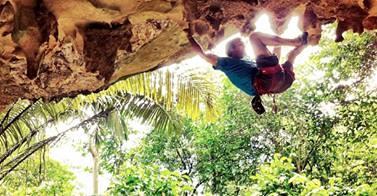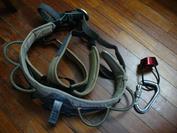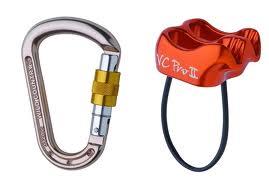Rock climbing is a fun and challenging sport but it can be a dangerous one. Climbing rock needs substantial amount of focus and concentration but don’t forget to pay attention to safety measures as well.
 |
You need to do everything to mitigate gravity effects and falling down. Your life depends on it. That is why backing up your equipment used is important.
Beginners are the most susceptible group prone to injury. Find a knowledgeable and well experienced climber to assist you.
The hazards and risks of rock climbing include:
- Falling rocks
- Falling objects
- Your own equipment failure
- Anchor failure
- Falling because of technical fault
- Hitting the ledges and ground after falling
- Incorrect belay techniques
- Inexperienced belayer
Climbing surely needs a very strong muscle for you to reach the top. Every extra effort used can lead to overuse injuries if you’re not well prepared.
It is natural to get muscle soreness after each activity either at indoor or at the cliff. So when you go for climbing, don’t overdo and take it easy.
The commonest injuries in this sport are to the fingers, hands, wrist and elbow as these are the body part being mainly used. Tendon tends to be stress out during climbing.
To prevent climbing injuries, follow these simple safety precautions:
- Take it easy
- Follow what your body is able to cope with. If you push beyond your limit, you are straining your muscle and this can lead to injury.
- Taping
- You can use strips of tape to support your finger tendon while climbing.
- Take a rest
- Make sure you take a rest day in between hard days of climbing. This allows your muscle to rest and recover before continuing next climbing session.
- Cross training
- Cross training makes you a better athlete and ensure your muscle in better shape and will definitely help in your climbing. As an example, you can do activities such as weight lifting, swimming or mountain biking.
- Avoid extreme climbing moves
- Vary your climbing regiments
- Try to perform climbing on different kind of rock types or different indoor types as to improve your skills.
- Stop if in pain
- If you feel pain over your fingers, hands, elbow or shoulder, stop the activities immediately. The concept of ‘no pain no gain’ is wrong.
- Complete your rehabilitation program
- If you’re injured, follow the advice from your doctor and physiotherapist. Adequate healing is necessary for you to be able to do your activities as safe as it can be.
- Always check the harnesses
- Always check the knots
- Always wear a helmet
- Helmet is a requirement before you perform this activity. It protects you from falling rocks and the impact from falling down.
- Always check the rope and belay device
- Use a long rope
- Make sure your rope is long enough to reach the anchors and lower back down on a sport route or to reach a belay ledge on multi-pitch route. Always tie a stopper knot in the tail end if your rope is too short.
- Always pay attention
- When you’re belaying, always give attention to the leader above. Don’t take the leader off belay unless you are absolutely sure that he is tied in and safe and inform you.
- Always climb with the rope over your leg
- Always make sure the rope is over your leg rather than between them or behind one if you’re the leader.
- Always bring enough gear
- Always observe first what you need to bring beforehand. Don’t just rely on the guidebook. You can always bring extra gears if in doubt.
- Always properly clip the rope
- Avoid backclipping, where the rope runs front to back rather than back to front in the carabiner.
- Always use safe anchors
- Use at least two anchors or more at the top of a pitch or route.
References
- Clinical Sports Medicine, Peter Brukner and Karim Khan
- www.climbing.about.com
- www.macecanada.com
| Last Reviewed | : | 23 January 2014 |
| Writer | : | Lt. Kol. Dr. Ridzuan b. Azmi |
| Accreditor | : | Prof. Madya Dr. Ahmad Tajuddin b. Othman |











